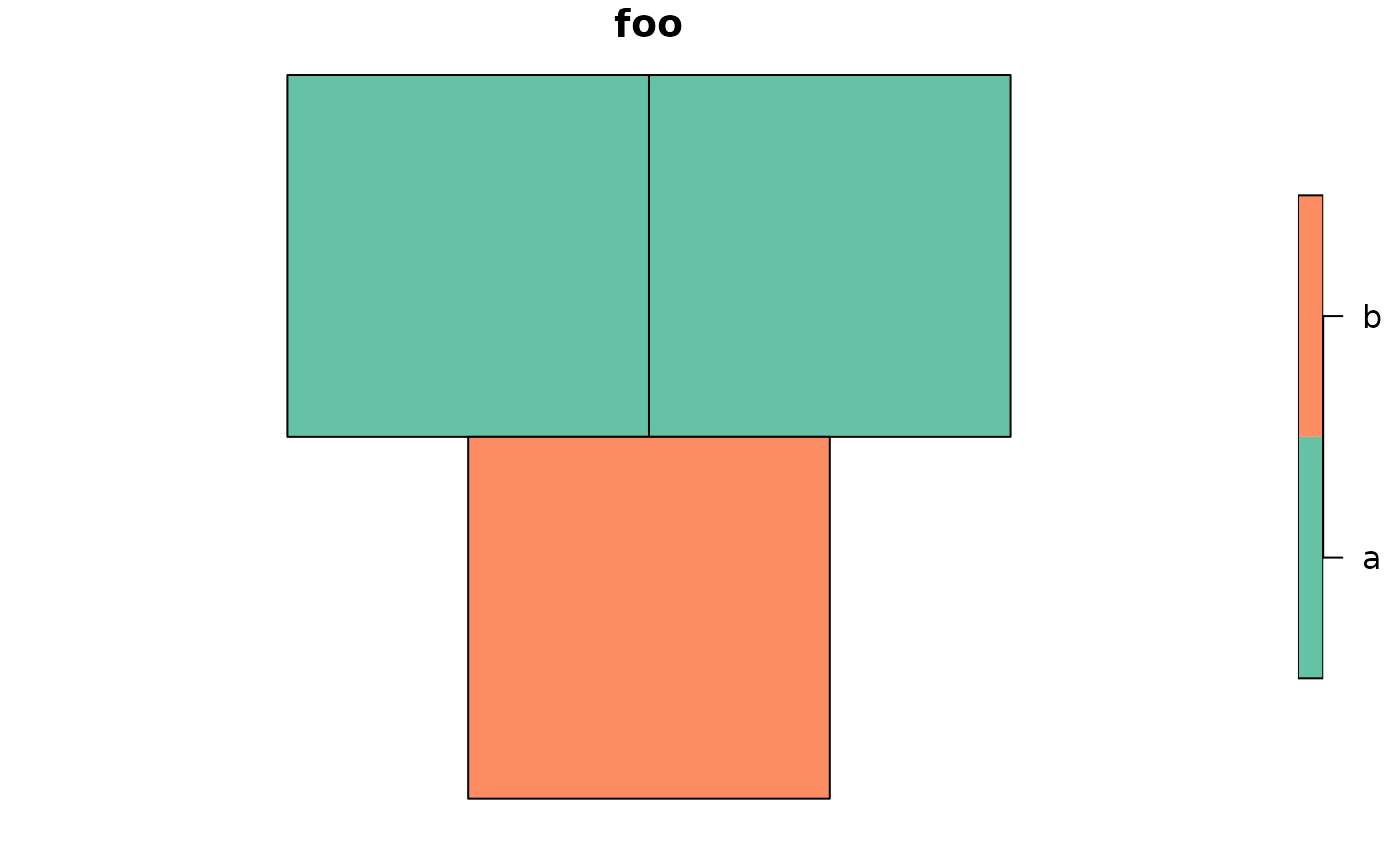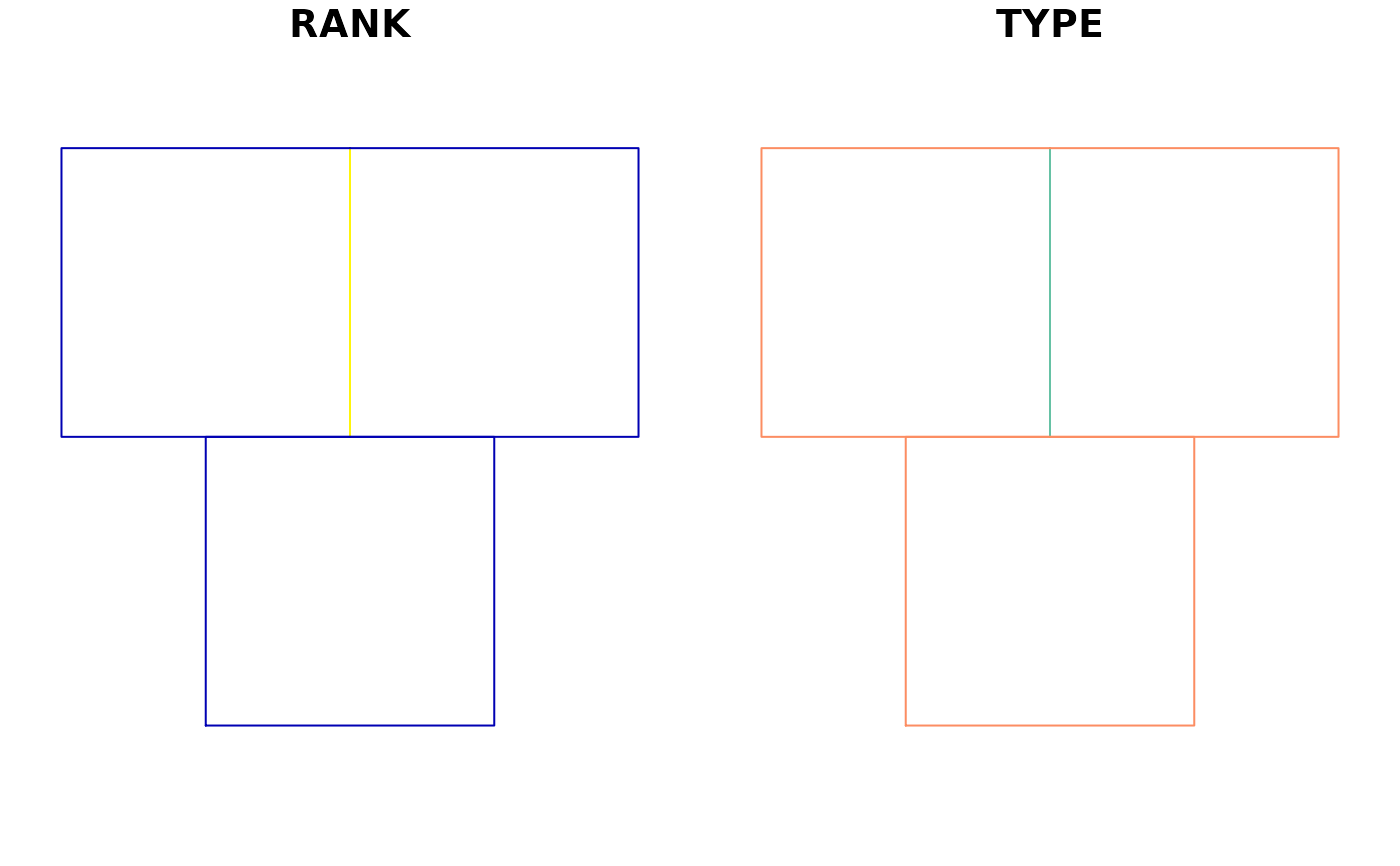Convert polygons to topological boundaries (lines)
Arguments
- input
input polygons object to convert to inner lines. One of:
geo_jsonorcharacterpolygons;SpatialPolygons*;sforsfcpolygons object
- fields
character vector of field names. If left as
NULL(default), external (unshared) boundaries are attributed as TYPE 0 and internal (shared) boundaries are TYPE 1. Giving a field name adds an intermediate level of hierarchy at TYPE 1, with the lowest-level internal boundaries set to TYPE 2. Supplying a character vector of field names adds additional levels of hierarchy.- ...
Arguments passed on to
apply_mapshaper_commandsforce_FCshould the output be forced to be a FeatureCollection (or sf object or Spatial*DataFrame) even if there are no attributes? Default
TRUE. If FALSE and there are no attributes associated with the geometries, a GeometryCollection (or Spatial object with no dataframe, or sfc) will be output.sysShould the system mapshaper be used instead of the bundled mapshaper? Gives better performance on large files. Requires the mapshaper node package to be installed and on the PATH.
sys_memHow much memory (in GB) should be allocated if using the system mapshaper (
sys = TRUE)? Default 8. Ignored ifsys = FALSE. This can also be set globally with the option"mapshaper.sys_mem"quietIf
sys = TRUE, should the mapshaper messages be silenced? DefaultFALSE. This can also be set globally with the option"mapshaper.sys_quiet"gj2008Generate output that is consistent with the pre-RFC 7946 GeoJSON spec (dating to 2008). Polygon rings are CW and holes are CCW, which is the opposite of the default RFC 7946-compatible output. This should be rarely needed, though may be useful when preparing data for D3-based data visualizations (such as
plotly::plot_ly()). DefaultFALSE
Examples
library(geojsonsf)
library(sf)
poly <- structure('{"type":"FeatureCollection",
"features":[
{"type":"Feature",
"properties":{"foo": "a"},
"geometry":{"type":"Polygon","coordinates":[[
[102,2],[102,3],[103,3],[103,2],[102,2]
]]}}
,{"type":"Feature",
"properties":{"foo": "a"},
"geometry":{"type":"Polygon","coordinates":[[
[103,3],[104,3],[104,2],[103,2],[103,3]
]]}},
{"type":"Feature",
"properties":{"foo": "b"},
"geometry":{"type":"Polygon","coordinates":[[
[102.5,1],[102.5,2],[103.5,2],[103.5,1],[102.5,1]
]]}}]}', class = c("geojson", "json"))
poly <- geojson_sf(poly)
summary(poly)
#> foo geometry
#> Length:3 POLYGON :3
#> Class :character epsg:4326 :0
#> Mode :character +proj=long...:0
plot(poly)
 out <- ms_lines(poly)
summary(out)
#> RANK TYPE geometry
#> Min. :0.00 Length:4 LINESTRING :4
#> 1st Qu.:0.00 Class :character epsg:4326 :0
#> Median :0.00 Mode :character +proj=long...:0
#> Mean :0.25
#> 3rd Qu.:0.25
#> Max. :1.00
plot(out)
out <- ms_lines(poly)
summary(out)
#> RANK TYPE geometry
#> Min. :0.00 Length:4 LINESTRING :4
#> 1st Qu.:0.00 Class :character epsg:4326 :0
#> Median :0.00 Mode :character +proj=long...:0
#> Mean :0.25
#> 3rd Qu.:0.25
#> Max. :1.00
plot(out)

